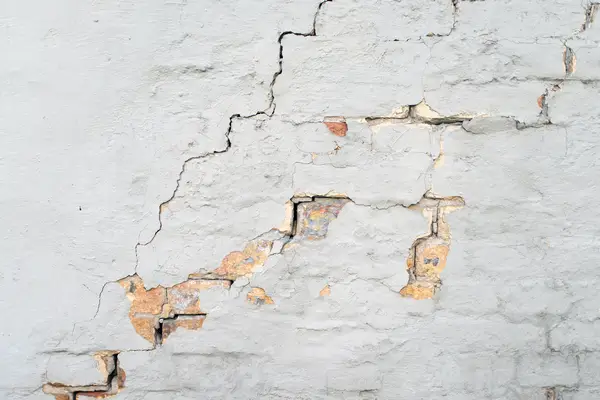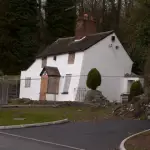
Having subsidence is one of the scariest things that happen can happen to your property. The cost of repair can be high and it will affect the saleability of your property, but you may be wondering how much does subsidence devalue a property.
But how much does subsidence devalue a property? The amount by which subsidence devalues your property is at least by how much it will cost to fix the subsidence problem. Plus an additional 10-25% off the asking price on top. You are far better to fix the problem yourself and check your insurance policy to see if this covers for subsidence repair.
What is the meaning of subsidence?
The meaning of subsidence is the process by which land or buildings sink to a lower level as a result of underground activity.
Subsidence can happen naturally or due to human activity and is caused by the roots of trees to close to a property, problems with drainage around the property or from underground mining.
Why does subsidence devalue property?
The reason why subsidence devalues a property is because it can cost significantly to repair and in the worst cases it can make a property unsafe.
The number of people prepared to buy a property with subsidence are limited. Which is what will result in the reduced value due to a reduced demand.
How can you sell a property with subsidence?
Buyers can’t get a mortgage on a property with subsidence. Which means the only buyer who you can sell a property to with subsidence is a cash buyer.
Cash buyers who may have the appetite to tackle a property with subsidence include investors, property developers and home buying companies.
You may be lucky to find a cash buyer who has the available cash due to their downsizing. But not many home buyers want to take on subsidence due to the risks and costs involved.
Why is a property with subsidence devalued by so much?
The reason a property is devalued by so much if it has subsidence is due to the cost involved in fixing the problem.
But also the only buyers who can purchase a property with subsidence are cash buyers. Cash buyers tend to be in business to make a profit. They need to take this into account when they make an offer to buy a property with subsidence.
Not all properties with subsidence need to be underpinned. But whether or not this is the case will need to be decided by a structural engineer.
However, if underpinning is required, according to My Job Quote, the cost of underpinning a property falls into the following ranges:
- The average cost for the resin injector method of underpinning is £1,200 per m². To underpin a 4 metre single wall on a 2 bed terrace will cost £4,800 using this method. But for a 4-bed detached an 8 x 6 metre wall would cost £16,800.
- The average cost for the traditional mass concrete method of underpinning is £1,500 per m². To underpin a 4 metre single wall on a 2 bed terrace will cost £6,000 using this method. But for a 4-bed detached an 8 x 6 metre wall would cost £21,000.
- The average cost for the mini-piling method of underpinning is £2,600 per m². To underpin a 4 metre single wall on a 2 bed terrace will cost £10,400 using this method. But for a 4-bed detached an 8 x 6 metre wall would cost £36,400.
In addition to the above costs for fixing the subsidence, the investor-buyer will also want to make a profit on the deal too. Otherwise they might just as well buy a property without a subsidence problem.
This element is the slight unknown amount. The level of profit an investor or a developer would want to make will vary from person to person or from business to business. As noted at the start of this article, this is going to be at least 10% off the asking price. But this could be 25% or even more depending on the extend of the problem.
The 10-25% off asking price is based on a comparison of a similar property in the same location that doesn’t have a subsidence problem.
Example of how much subsidence devalues a property
On the assumption that a 3-bed semi detached house would ordinarily sell for £250,000. But just before it’s put on the market it’s discovered that it has subsidence. The subsidence is found along a 5 x 4 metre wall. The chosen method will be to use mini piling.
Subsidence example
| Value before subsidence found | £250,000 |
|---|---|
| Less: | |
| Cost of mini-piling | £24,000 |
| Profit to investor at 25% | £62,500 |
| __________ | |
| Net devalued property value | £163,500 |
| __________ |
You may try to argue that property investors or developers are taking advantage of the situation. But investors and property developers are in business to make money.
Firstly, they will need to come up with the cash to buy the property, which isn’t cheap to do. They also need to spend the money to fix the problem before putting the fixed house back on the market.
This is why it’s better for you to fix subsidence on the property before you sell. For example in the above scenario you would save yourself £62,500!
Can you sell an underpinned house?
Once a house has been properly underpinned it can be sold and you can get a mortgage on the property. But you must declare that underpinning has been done to the estate agent and on the questionnaire from solicitors.
What if a house was underpinned 20-30+ years ago?
If a house was underpinned 20-30+ years ago and there are no signs of movement since then, there’s no problem in buying a house like this. Getting a mortgage shouldn’t be a problem, but you will need to declare this when you take out home insurance if you want cover for subsidence.
Should I buy a property that has been underpinned?
As long as the house has shown no further signs of subsidence since the underpinning and a surveyor doesn’t pick up any problems, it’s okay to buy a house that has been underpinned. But you need to be aware of the additional cost of insuring a previously underpinned property, which may put off other buyers.
Does underpinning devalue property
Whilst underpinning is a process that fixes the problem of subsidence, this can still have the effect of devaluing the property. The reason why is because it will put off some buyers who won’t want a previously underpinned property as there are no guarantees that it won’t require further structural work.
What if subsidence is found on the survey?
It’s possible that subsidence will be found on a survey that wasn’t already known beforehand. Starting signs of subsidence can begin with windows or doors starting to stick and becoming a problem to open.
As the subsidence progresses, it will show up as follows:
- Substantial cracks in excess of 2mm in walls especially around windows and doors.
- Ripping or rippling of wallpaper.
- Uneven and sloping floors so the property appears to be on a slant.
- Walls or windows don’t look level.
- Cracks appear between the main property and an extension.
Homeowners aren’t experts in subsidence and may not realise the seriousness of the cracks they have.
Subsidence is usually quite obvious. But on the assumption this wasn’t known beforehand, what are the implications if subsidence is found on the mortgage survey?
Firstly, the mortgage company will refuse to lend on the property until the subsidence has been repaired. But repairing subsidence isn’t a quick job. The problem needs to be surveyed by a structural engineer to evaluate whether your property has been affected by subsidence. Plus what’s required to remedy the situation.
It is likely the house sale will fall through as a result of the discovery of subsidence on the survey.
The steps to take if this is the case:
- Check your insurance policy to see if subsidence is covered. If it is let your insurance company know that subsidence has been found.
- Appoint a structural engineer to survey the property. If you are covered by insurance, this will be done under the guidance of the insurance company
- If subsidence is present, get quotes to fix the problem. Make sure to use a recognised and reputable company to fix the problem. You will need to satisfy prospective buyers that you have dealt with the problem satisfactorily.
- If you can afford to fix the subsidence problem or your insurance will cover the repair costs, go ahead and fix the problem.
- If you can’t afford to fix the subsidence you may need to find an investor or property developer to buy your house with cash. Or remain in the house until you can afford the repair costs. But be prepared for significantly low offers.
- You must declare to potential buyers that the house has previously been subject to subsidence. Tell them how it was fixed by showing them details of the cost of repair.
Can you get a mortgage on a house that has had subsidence?
You can get a mortgage on a property that has had subsidence in the past. But only if the subsidence was satisfactorily repaired and there have been no signs of movement since it was fixed. You won’t get a mortgage if the subsidence is ongoing and has not been addressed.
If you are a property investor or an adventurous homebuyer, you could use bridging finance to buy the property with subsidence.
Usually bridging finance is used to bridge the gap between buying a problem property, fixing the problem and then remortgaging using term finance to repay the bridge finance once the problem has been fixed. Which is what can be done with subsidence.
But note that bridging finance is not cheap. Plus it’s normally lent for fixed short term period of between 6-12 months. Which means you must fix the subsidence problem in this time. After which you can either sell the property of refinance it to a suitable term mortgage.
Should you buy a house with subsidence?
Before you consider whether to buy a property with subsidence you need to check whether the subsidence is historic or ongoing. If it’s historic it’s unlikely to continue moving and you may or may not get a mortgage.
If it’s ongoing the property will be unmortgagable and without cash you’ll need to buy another property.
I hope this article has helped about how much does subsidence devalue a property
If this article has helped on ‘how much does subsidence devalue a property’ please share it on your favourite social media site.
Also, if you have any questions or you need help, please feel free to comment below too. Alternatively, if you need more help, please feel free to contact us on our contact us page here. Or join the discussion and ask your question in the property forum.




